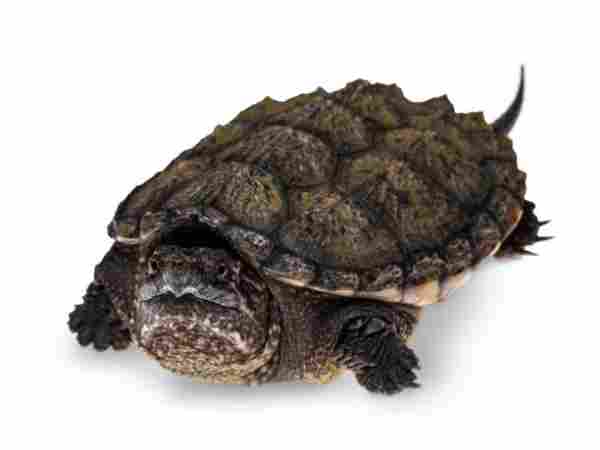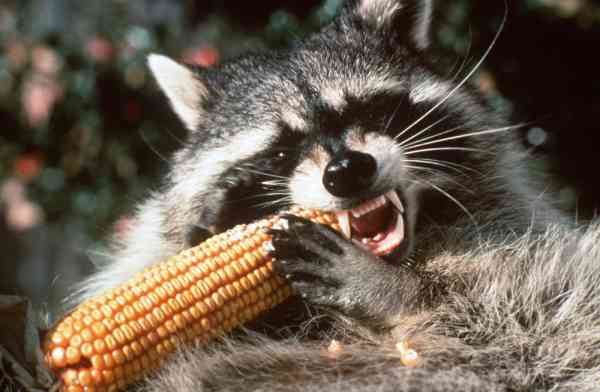Goldfish, those bright and shimmering aquatic pets adorning countless home aquariums, are a symbol of tranquility and beauty. Yet, beyond the serene confines of fishbowls and ponds, a surprising reality exists. Some of the animal kingdom’s most unexpected carnivores, from birds to reptiles and even mammals, have developed a taste for these seemingly docile, golden fish. In this article, we embark on a curious journey into the intriguing world of “goldfish gastronomy and Animals That Eat Goldfish.”
From the stealthy heron that plucks them from garden ponds to the voracious raccoon that wades into shallow waters for a snack, we’ll uncover the surprising culinary preferences of these unexpected predators. How do these animals catch goldfish, and what drives their unique dietary choices? Join us as we dive into the aquatic realm of goldfish predators and unlock the secrets of their gourmet feasts.
The Goldfish as an Invasive Species
Goldfish, often introduced into new environments by well-meaning pet owners, have become a formidable invasive species in many aquatic ecosystems. Their ability to thrive and reproduce rapidly disrupts the delicate balance of native aquatic life. Goldfish outcompete native species for resources, degrade water quality, and alter the habitat structure.
They are highly adaptable and can survive in a wide range of environmental conditions, making them a persistent threat. Invasive goldfish populations can have cascading effects on entire ecosystems, from the decline of native fish populations to changes in aquatic plant communities. This article explores the ecological consequences of goldfish invasions and the urgent need for comprehensive mitigation and prevention efforts to protect the integrity of aquatic ecosystems.
Birds That Prey on Goldfish

In the natural world, some avian predators have discovered that goldfish make for a tasty meal. Among these skilled hunters are herons and kingfishers, each with its unique approach to catching goldfish. Herons, known for their patient stalking and lightning-fast strikes, silently wade in shallow waters, waiting for the perfect moment to spear their prey. In contrast, kingfishers employ their remarkable agility and keen eyesight to dive headfirst into the water, emerging with a glimmering goldfish clutched in their beaks.
These birds not only exemplify the diversity of hunting strategies in the avian world but also play a crucial role in regulating goldfish populations in the wild. By exploring the hunting tactics of herons and kingfishers, we gain insight into the intricate dynamics of predator-prey relationships in aquatic ecosystems.
Aquatic Predators

In the tranquil waters where goldfish often reside, there lurk a variety of aquatic predators, each with its method of making a goldfish its next meal. Large fish species, such as bass and catfish, are top contenders in this underwater drama. Bass, known for their voracious appetites and swift attacks, have the advantage of size and speed. They strike with lightning speed, engulfing goldfish whole.
Catfish, on the other hand, rely on their keen sense of smell and sensitive barbels to locate their prey in murky waters. Turtles, including snapping turtles and painted turtles, add their own dimension to the story.
Snapping turtles, with their powerful jaws, can make quick work of a goldfish, while painted turtles rely on their agility to snatch the occasional snack. These aquatic predators exemplify the intricacies of the food web in freshwater habitats and the role they play in maintaining ecological balance.
Mammalian Predators

While birds and aquatic creatures often take the spotlight, some mammals have also developed a taste for goldfish. Raccoons, known for their clever and opportunistic foraging behaviors, are frequent visitors to ponds and water bodies where goldfish reside. Their dexterous paws allow them to snatch goldfish from the water’s edge.
Otters, with their playful and agile nature, are equally skilled hunters in aquatic environments. They dive beneath the surface, using their strong jaws to capture goldfish. These mammalian predators serve as a reminder that goldfish face threats from a variety of terrestrial and aquatic sources, and their presence can influence the behavior of these animals as they adapt to the availability of this non-native prey.
Amphibians and Reptiles as Predators

In the intricate web of goldfish predation, amphibians and reptiles play a unique role. Frogs, including both adult frogs and tadpoles, have been observed preying on goldfish. Frogs are known for their swift and darting tongue strikes, making them effective predators in aquatic environments.
Garter snakes and water snakes, often found near freshwater habitats, are also opportunistic hunters of goldfish. Their slender bodies and ability to move stealthily in water allow them to ambush goldfish with surprising speed. This diverse group of predators showcases the adaptability of amphibians and reptiles to a diet that includes goldfish, shedding light on the intricate relationships within aquatic ecosystems.
Insects as Goldfish Predators

In the underwater realm where goldfish dwell, smaller but equally effective predators lurk. Insects like dragonfly larvae and water beetles are among the unsuspecting goldfish predators. Dragonfly larvae, with their voracious appetites and specialized mouthparts, are formidable underwater hunters.
They stalk their prey and use their extendable jaws to grasp and consume goldfish. Water beetles, equipped with powerful legs adapted for swimming, are equally agile in pursuit. These tiny but efficient predators demonstrate the diversity of aquatic life forms that interact with goldfish, highlighting the complexity of food webs in freshwater ecosystems.
Other Goldfish as Predators
Surprisingly, goldfish themselves can become predators under certain circumstances. In overcrowded environments with limited resources, goldfish may resort to cannibalism. When food sources are scarce, goldfish may turn to their own kind as a last resort. This phenomenon underscores the significance of resource availability in determining the behavior of these fish, even within their own species.
Mitigation and Prevention Strategies
The challenge of managing goldfish populations and mitigating their environmental impact is multifaceted. Scientists and conservationists have developed various strategies to control goldfish populations and prevent further invasions.
These include targeted removal efforts, the implementation of physical barriers to limit their spread, and public education campaigns to raise awareness about the potential ecological consequences of releasing pet goldfish into the wild. By exploring these mitigation and prevention strategies, we gain insight into the ongoing efforts to address the challenges posed by invasive goldfish.
The Ethical Dilemma
The presence of goldfish as prey raises ethical questions regarding their welfare and the ethical considerations of their use in animal diets. This section delves into the complexities of the ethical dilemma surrounding goldfish predation and the ongoing debate regarding the treatment of these fish in both natural and captive environments.
It considers questions related to animal welfare, human responsibility, and the moral implications of introducing goldfish into environments where they become prey. Exploring this ethical dimension adds depth to the discussion of goldfish predation and highlights the importance of considering the well-being of all creatures, both native and non-native, in our interactions with the natural world.
Final Words
As we explore the multifaceted world of animals that dine on goldfish, we uncover not only the ecological implications but also the ethical and moral aspects of this phenomenon. Understanding the role of these predators in ecosystems and the challenges they pose offers valuable insights into the delicate balance of life in our natural world. It underscores the importance of responsible pet ownership, conservation efforts, and ethical considerations in our interactions with the animal kingdom.
Reference:
- https://www.caringpets.org/how-to-take-care-of-a-goldfish/protect-pond-from-predators/
- https://outdoorguru.co.uk/what-is-eating-your-pond-fish/
- http://www.biokids.umich.edu/critters/Carassius_auratus/

Jeevan Kodiyan
An animal enthusiast with an interest in zoology, studying the behavior and activities of animals in the wild habitat. I work on research projects related to species conservation and endangered species protection. I also leverage zoology to become an educator, educating others about the importance of protecting our natural environment and the beauty of animals in their natural habitats.









